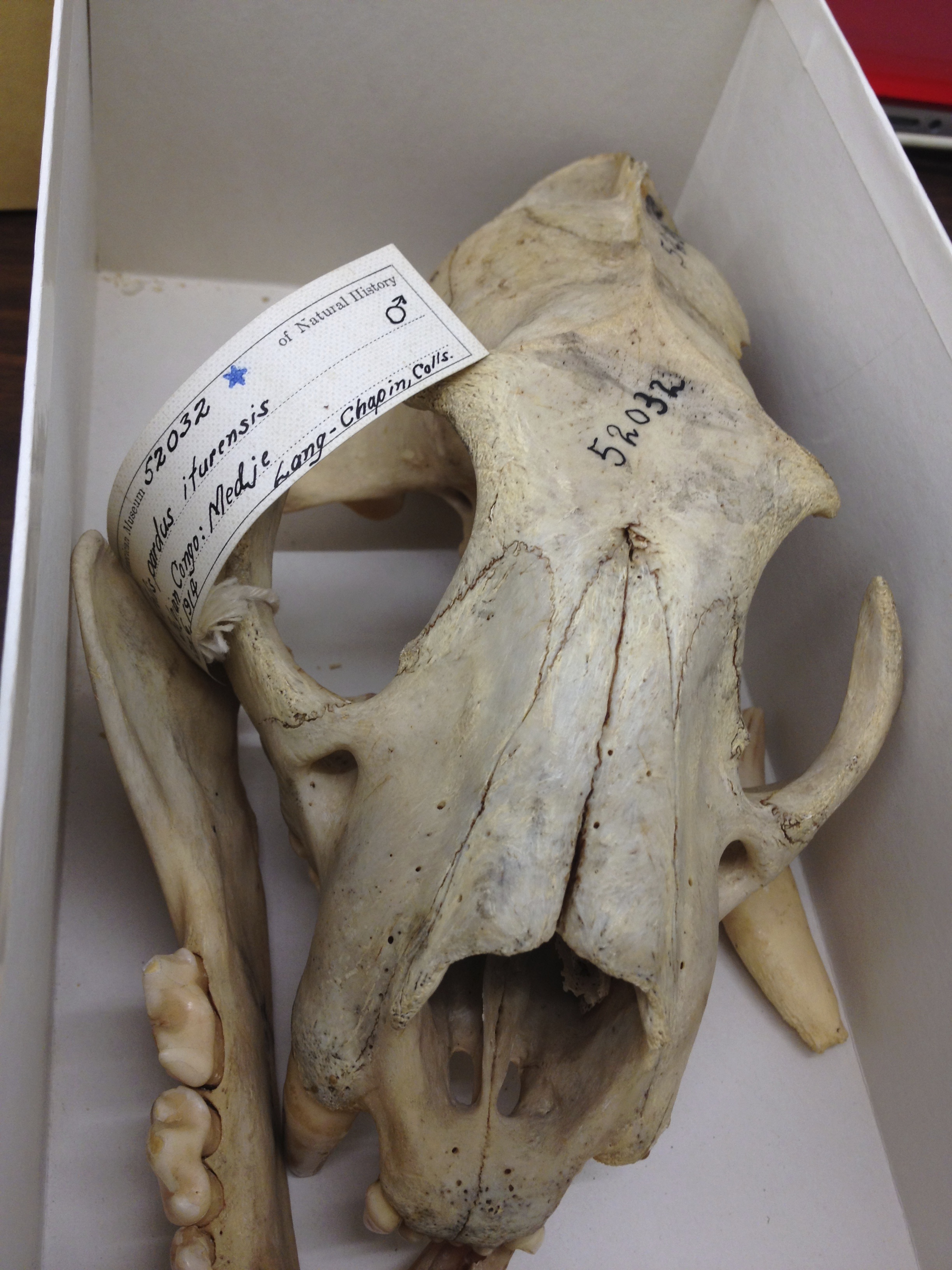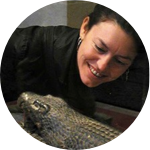About This Project
Natural History dioramas are windows into another world. In many cases, the places and species we see behind the glass have changed dramatically over the century since these historic displays were created. We will work with a team of young people to explore biodiversity and history as we examine the DNA from species in the dioramas.
Ask the Scientists
Join The DiscussionWhat is the context of this research?
Modern tools allow us to examine DNA from ancient specimens. We have used these techniques to discover new crocodile species from Egyptian mummies and to resurrect an extinct frog! Using specimens from the American Museum of Natural History in New York City, we will "time travel" to the Congo as it was 100 years ago. Are there cryptic species like the Olinguito! Has diversity been lost? These dioramas and specimens may hold the key to understanding how best to share and conserve these unique places and species. Next time you visit the museum, you will know that you planned a modern day expedition into the archives.
What is the significance of this project?
In our recent work, we have been actively promoting the use of ancient DNA to determine conditions of natural systems in the past. The results from these analyses will be disseminated via public displays in a major metropolitan area and help to increase public understanding of our changing planet while educating the public about critical factors impacting global biodiversity.
What are the goals of the project?
We plan to work with 2-4 undergraduate and high school students to study the history of the expeditions and to sequence the DNA of over 300 specimens from crocodiles, leopards, rhino, giraffe, mongoose, antelope, and monkeys. Because these specimens are over a century old, methods will require double the effort of fresh DNA. Our team will develop content for online materials related to our research.
The majority of funds will be used to fund help for our sequencing efforts and to develop online materials.
A small portion of the funds will be used for students to attend conferences and pay for publications so we can share our work with the larger community.
Budget
The DNA extraction kits are very expensive ($900 each) and we do several replicates because of the lower quality DNA. We are budgeting $3,500 for extractions and another $5000 for consumable lab products and sequencing reagents. We will also be doing a few Next Generation Sequencing (NGS) runs for individuals from each species which will be a bit expensive. We will be hiring a student lab tech for one semester to help track samples and processing. Finally, we would like to present the results at multiple conferences in the coming year.
The lab reagents will include extractions, sequencing reagents and next generation sequencing.
Endorsed by
Meet the Team
Affiliates
Team Bio
As an undergraduate, I was a museum volunteer and spent my time relabeling pygmy elephant spears in the basement of the Redpath Museum in Montreal. I have never stopped seeing these institutions as a way to time travel and now focus my research program on highlighting the value of these amazing archives. We have had over 30 undergraduates and even a few High School students come and learn ancient DNA techniques!
In our lab at Fordham University, we are interested in the incorporation of genetic and other data from museum specimens, historical records, and archeological sources into models of how changes in human management of landscapes have altered the genetic profiles of species. These studies currently have two foci, one in Africa and the other in the Sierra Nevada in California. We are in the process of examining west and central African vertebrates over the past century, collected by the American Museum of Natural History's Lang-Chapin expedition. We are also studying climate related changes in the Tahoe Basin in the Sierras, examining temporal patterns genetic structure of small mammals (chipmunks and pika).
In another vein, we are analyzing genetic data from crocodiles in Madagascar to look at patterns of recent colonization. One hypothesis that we are testing is that impacts associated with the arrival of humans and Nile crocodiles may have resulted in the extinction of Madagascar's endemic horned crocodile (Voay robustus).
Evon Hekkala
I study DNA from specimens from museums to understand how life has responded to planetary changes over time. I have sequenced DNA from crocodile mummies and from extinct crocodiles, as well as from hundreds of other specimens including century old frogs, lizards, chipmunks and leopards.This area of research (ancient or archival DNA) is rapidly expanding with new techniques and these are exciting times for scientists like me.
Although I conduct research on ancient DNA from many animals species, including crocodiles, I wasn't always a scientist and I think that crowd funding is a great way to let people know that everyone can be involved in science no matter what their background.
I had an interesting path to my career in science. You can check it out in more detail here, but I started out as an art student which is why, when I began to study crocodiles, I noticed all of the interesting paintings of "ceiling crocodiles" and the carvings of the crocodile god Sobek related to fertility and health. I happened to take a course on the history of evolutionary theory and was hooked. I switched to anthropology and began studying archeology while volunteering at natural history museums in Montreal, eventually landing a curatorial assistant position at Cal Academy in San Francisco. I think the combination or art history, natural history collections and conservation of crocodiles stirred my fascination with the ways in which people's belief systems intersect with science. Who can resist wanting to know more about the crocodiles hanging from the ceilings of apothecary shops? and who can resist the Crocodylus Apothecary Hypothesis?
Along with this project, we are analyzing genetic data from extinct crocodiles in Madagascar to look at patterns of recent colonization. One hypothesis that we are testing is that impacts associated with the arrival of humans and Nile crocodiles may have resulted in the extinction of Madagascar's endemic horned crocodile (Voay robustus).
Press and Media
Our previous work has been featured in blogs from Scientific American, Discovery and National Geographic.
Additional Information
Here are a few examples where we used museum specimens to discover entirely new things about creatures we thought we knew:
http://whyevolutionistrue.wordpress.com/2011/06/21/extinct-frog-rediscovered-sort-of/
Can you spot the lurking crocodile?
 http://link.springer.com/article/10.1007%2Fs10592-011-0229-6/fulltext.html
http://link.springer.com/article/10.1007%2Fs10592-011-0229-6/fulltext.html


Project Backers
- 13Backers
- 12%Funded
- $1,160Total Donations
- $89.23Average Donation

